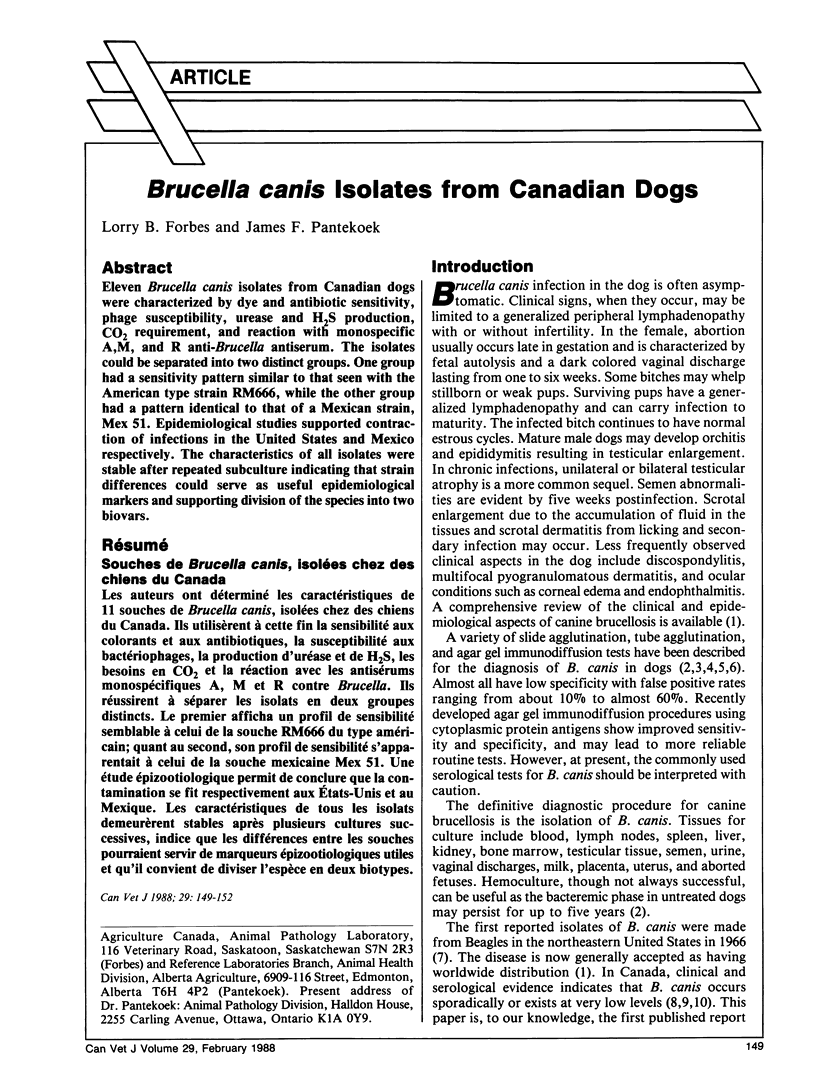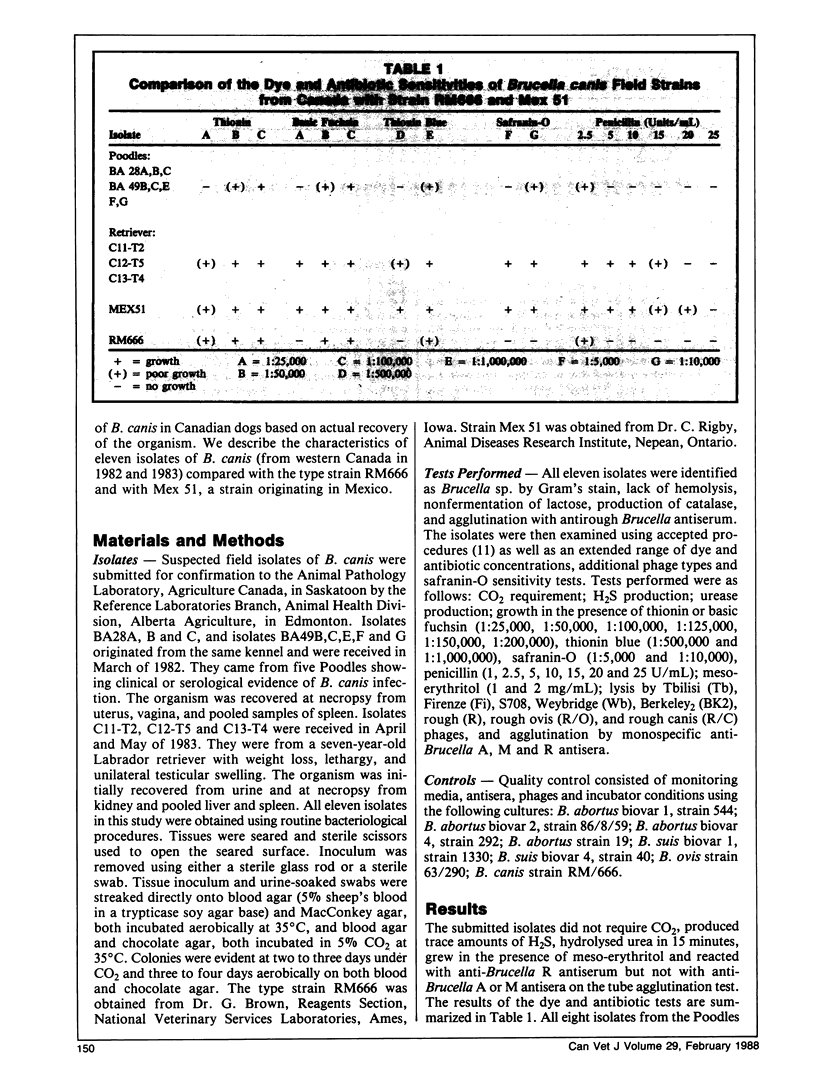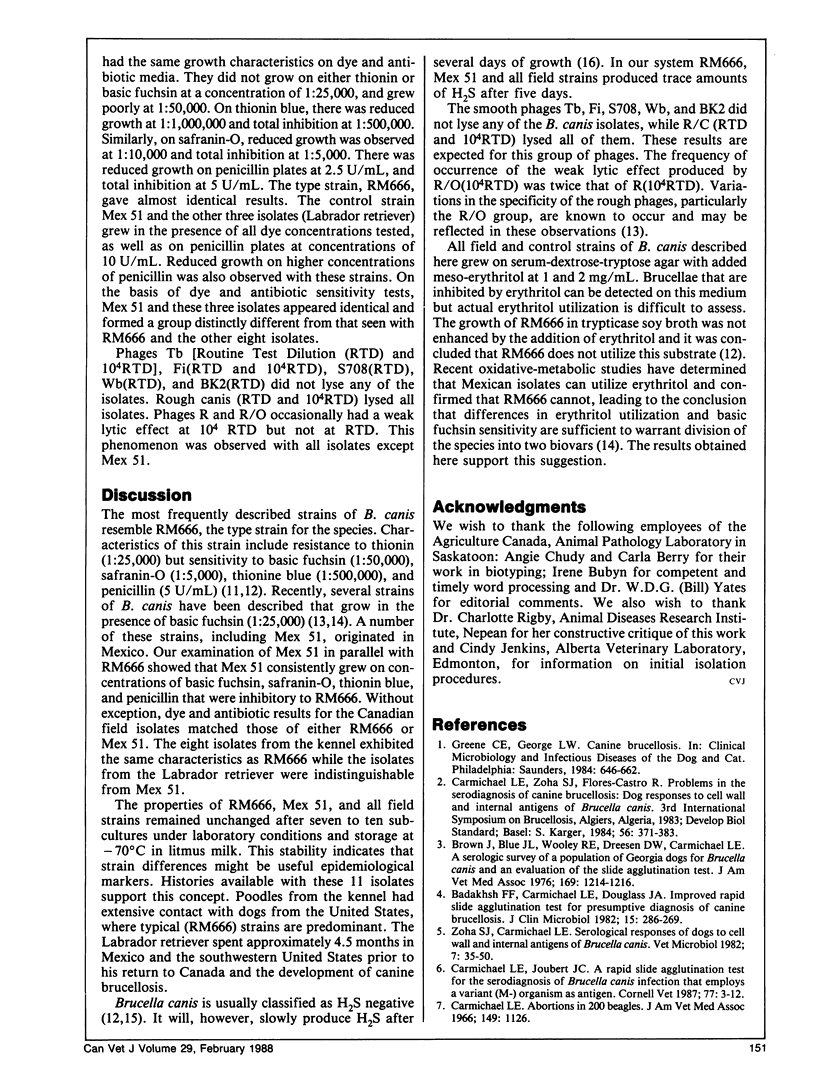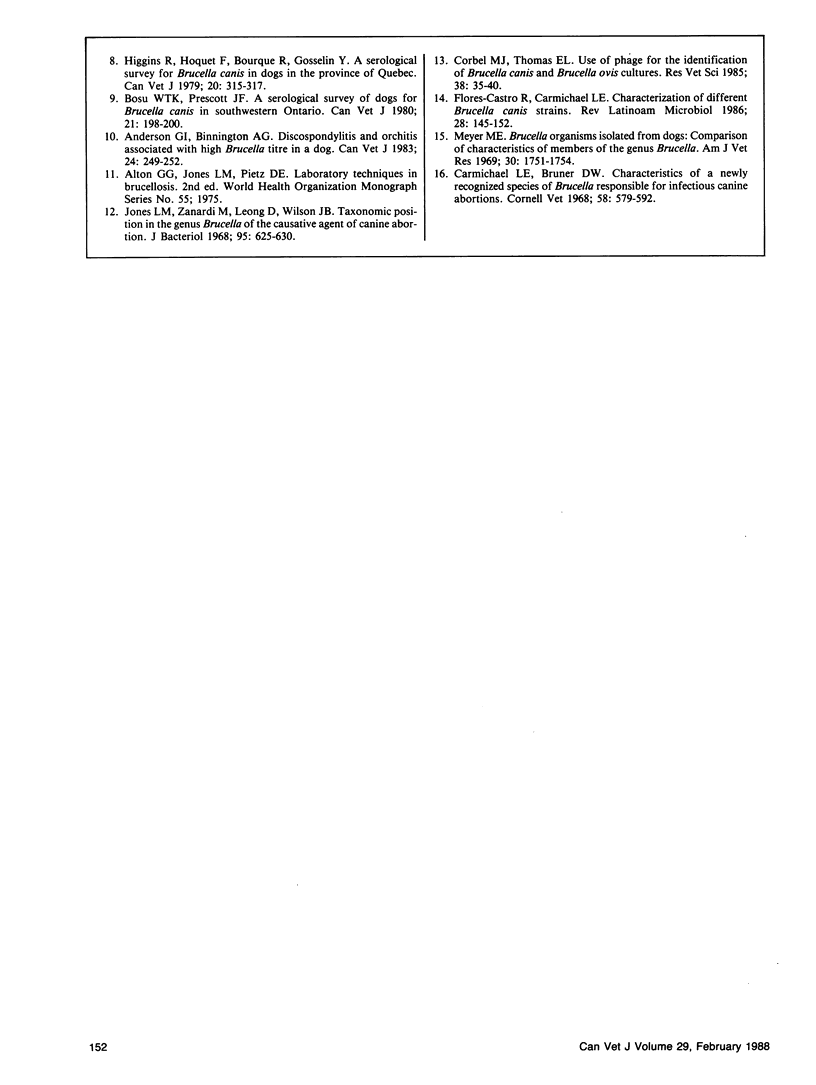Abstract
Eleven Brucella canis isolates from Canadian dogs were characterized by dye and antibiotic sensitivity, phage susceptibility, urease and H2S production, CO2 requirement, and reaction with monospecific A,M, and R anti-Brucella antiserum. The isolates could be separated into two distinct groups. One group had a sensitivity pattern similar to that seen with the American type strain RM666, while the other group had a pattern identical to that of a Mexican strain, Mex 51. Epidemiological studies supported contraction of infections in the United States and Mexico respectively. The characteristics of all isolates were stable after repeated subculture indicating that strain differences could serve as useful epidemiological markers and supporting division of the species into two biovars.
Full text
PDF



Selected References
These references are in PubMed. This may not be the complete list of references from this article.
- Anderson G. I., Binnington A. G. Discospondylitis and orchitis associated with high Brucella titre in a dog. Can Vet J. 1983 Aug;24(8):249–252. [PMC free article] [PubMed] [Google Scholar]
- Badakhsh F. F., Carmichael L. E., Douglass J. A. Improved rapid slide agglutination test for presumptive diagnosis of canine brucellosis. J Clin Microbiol. 1982 Feb;15(2):286–289. doi: 10.1128/jcm.15.2.286-289.1982. [DOI] [PMC free article] [PubMed] [Google Scholar]
- Bosu W. T., Prescott J. F. A serological survey of dogs for Brucella canis in southwestern Ontario. Can Vet J. 1980 Jul;21(7):198–200. [PMC free article] [PubMed] [Google Scholar]
- Brown J., Blue J. L., Wooley R. E., Dreesen D. W., Carmichael L. E. A serologic survey of a population of Georgia dogs for Brucella canis and an evaluation of the slide agglutination test. J Am Vet Med Assoc. 1976 Dec 1;169(11):1214–1216. [PubMed] [Google Scholar]
- Carmichael L. E., Bruner D. W. Characteristics of a newly-recognized species of Brucella responsible for infectious canine abortions. Cornell Vet. 1968 Oct;48(4):579–592. [PubMed] [Google Scholar]
- Carmichael L. E., Joubert J. C. A rapid slide agglutination test for the serodiagnosis of Brucella canis infection that employs a variant (M-) organism as antigen. Cornell Vet. 1987 Jan;77(1):3–12. [PubMed] [Google Scholar]
- Carmichael L. E., Zoha S. J., Flores-Castro R. Problems in the serodiagnosis of canine brucellosis: dog responses to cell wall and internal antigens of Brucella canis. Dev Biol Stand. 1984;56:371–383. [PubMed] [Google Scholar]
- Corbel M. J., Thomas E. L. Use of phage for the identification of Brucella canis and Brucella ovis cultures. Res Vet Sci. 1985 Jan;38(1):35–40. [PubMed] [Google Scholar]
- Flores Castro R., Carmichael L. E. Caracterización de diferentes cepas de Brucella canis. Rev Latinoam Microbiol. 1986 Apr-Jun;28(2):145–151. [PubMed] [Google Scholar]
- Higgins R., Hoquet F., Bourque R., Gosselin Y. A serological survey for Brucella canis in dogs in the Province of Quebec. Can Vet J. 1979 Nov;20(11):315–317. [PMC free article] [PubMed] [Google Scholar]
- Jones L. M., Zanardi M., Leong D., Wilson J. B. Taxonomic position in the genus Brucella of the causative agent of canine abortion. J Bacteriol. 1968 Feb;95(2):625–630. doi: 10.1128/jb.95.2.625-630.1968. [DOI] [PMC free article] [PubMed] [Google Scholar]
- Meyer M. E. Brucella organisms isolated from dogs: comparison of characteristics of members of the genus Brucella. Am J Vet Res. 1969 Oct;30(10):1751–1756. [PubMed] [Google Scholar]
- Zoha S. J., Carmichael L. E. Serological responses of dogs to cell wall and internal antigens of Brucella canis (B. canis). Vet Microbiol. 1982 Mar;7(1):35–50. doi: 10.1016/0378-1135(82)90004-9. [DOI] [PubMed] [Google Scholar]


